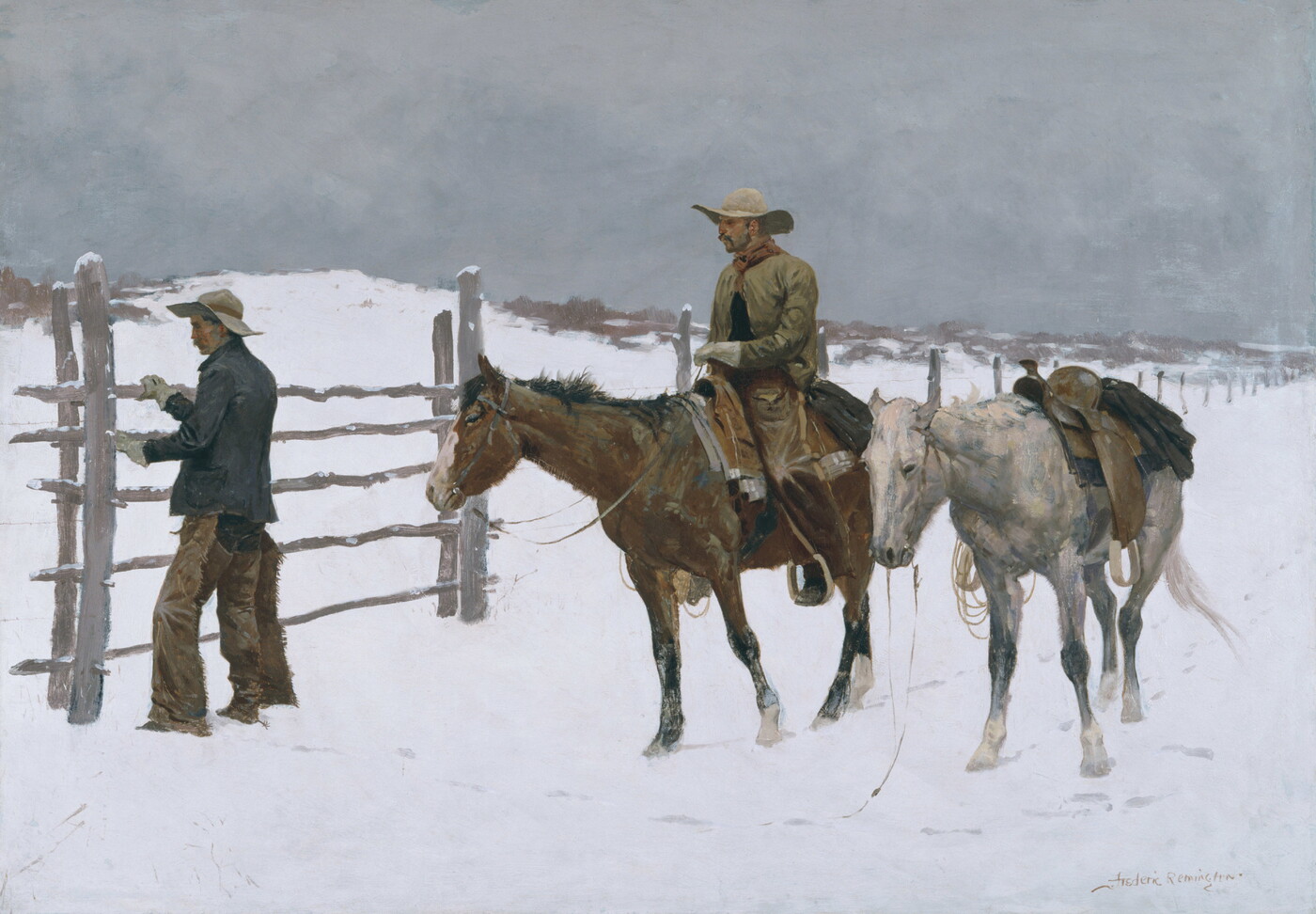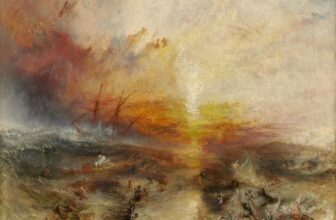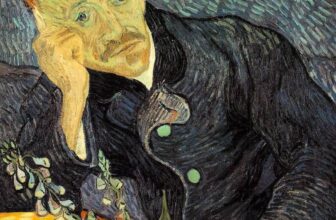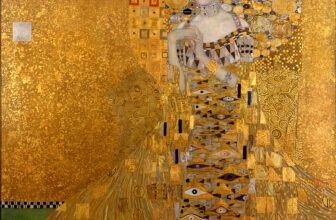
A Lament for the Vanishing West
In the quiet twilight of the American frontier, a painting captures a moment of transformation, a subtle but profound farewell to a chapter of American identity. The work is The Fall of the Cowboy, painted by Frederic Remington, one of the most celebrated artists of the American West. More than just a depiction of two weathered figures and a barbed wire fence, this painting is a eulogy. It speaks of loss, change, and the fading mythos of the cowboy, an icon that once stood for rugged freedom and wild, untamed land.
Let us journey through the canvas, its creator, its context, and the poignant message behind The Fall of the Cowboy, a painting that doesn’t just show a scene, but mourns the end of an era.
Who Painted The Fall of the Cowboy
The Fall of the Cowboy was painted by Frederic Remington in 1895, an artist whose name is almost synonymous with the imagery of the Old West. Remington was not only a painter but also a skilled illustrator and sculptor. He had a remarkable ability to translate the spirit of the American frontier into visual art. Born in 1861 in Canton, New York, Remington was a product of the East, but his heart was captivated by the West.
His career took off in the 1880s as he traveled extensively across the western United States. He worked for publications like Harper’s Weekly, bringing readers across the nation detailed and often romanticized images of cowboys, Native Americans, soldiers, and wide-open landscapes. While many Easterners knew the West only through dime novels and folklore, Remington brought it to life with vivid realism and emotional resonance.
Yet, by the time he painted The Fall of the Cowboy, Remington’s work had taken a more somber tone. The world he had so faithfully depicted was slipping away, and he knew it.
What Is The Fall of the Cowboy Painting All About
At first glance, The Fall of the Cowboy may seem like a simple scene. Two cowboys are shown dismounting their horses in the snow, attempting to open a gate in a barbed wire fence. One holds a coiled lasso, while the other works the latch. Their expressions are obscured by the weather and the brims of their hats, but the mood is unmistakably heavy, quiet, reflective, and subdued.
But beneath its seemingly mundane subject lies a powerful narrative.
The cowboy, once free to roam vast, open ranges, is now confronted by the enclosing reach of modernity. The barbed wire fence symbolizes this transformation, it slices across the land and demarcates private property, ending the era of open-range herding. The winter landscape enhances the melancholy, suggesting not just the literal cold of the season but the symbolic winter of the cowboy’s time.
This is not a dramatic fall with fanfare or bloodshed. Instead, Remington captures a quiet resignation, the way a culture fades not with a bang, but with a slow and silent retreat. The painting does not condemn change but mourns it. It recognizes the inevitability of progress and the cost it extracts from tradition.
The Meaning and Symbolism Behind The Painting
The Fall of the Cowboy is layered with symbolism. Every element, from the barbed wire to the winter setting, plays a part in the larger allegory.
1. Barbed Wire – The End of Freedom
Barbed wire was a revolutionary invention in the late 19th century. It marked the beginning of private property in the West, as vast tracts of open land were fenced off by settlers and ranchers. For cowboys, who had thrived on the concept of open range cattle drives, this marked the beginning of the end.
The barbed wire in Remington’s painting is not just a physical barrier, it is a metaphor for societal change, a line that once crossed, would forever alter the landscape of the American West.
2. Winter – The End of an Era
The snow-covered landscape isn’t merely aesthetic. Winter is a traditional symbol of death and dormancy. It suggests the closing of a season, the passing of time. Just as nature sleeps in winter, so too does the lifestyle of the cowboy fall into dormancy, awaiting a rebirth that never truly comes.
3. The Cowboys’ Posture – Resignation
There’s a stillness to the cowboys’ movements. They are not fighting the change, they are adapting to it. This posture of quiet resignation captures the real tragedy: not a dramatic fall, but a slow surrender to inevitability. These are not rebels, they are relics, still moving within a world that has begun to outgrow them.
4. The Gate – Transition
The gate being opened in the fence is a powerful transitional symbol. It’s both a literal and figurative threshold. The cowboys must go through it, but in doing so, they cross from one era into another. It represents not only physical movement across land but cultural movement into a new epoch.
Historical Context: The Cowboy at a Crossroads
When Remington painted The Fall of the Cowboy, the American frontier was officially declared “closed.” The U.S. Census of 1890 had famously noted that there was no longer a clear frontier line, no more vast, unexplored wilderness. The West was being tamed, settled, fenced, and civilized.
This was a cultural crisis for many Americans. The cowboy had become a national symbol, an embodiment of freedom, individualism, and masculinity. With the frontier gone, what would happen to the cowboy?
Remington felt this shift keenly. Though he had once helped romanticize the West, he also understood that it was never static. In The Fall of the Cowboy, he doesn’t sugarcoat the consequences of modernization. He presents them with dignity but sorrow, a clear-eyed view of the inevitable.
The painting also coincided with the growing influence of industrialization in America. Railroads had crisscrossed the continent, towns were growing, and the wildness of the West was being subdued. It was no longer the domain of outlaws and adventurers but of landowners, corporations, and lawmen. The cowboy’s role in this new world was diminished.
Where is The Fall of the Cowboy Painting Located
Today, The Fall of the Cowboy is housed in the American Heritage Center at the University of Wyoming in Laramie, Wyoming. This is a fitting home, as Wyoming itself played a significant role in cowboy culture and the Western frontier.
The American Heritage Center is a research and archival facility that collects manuscripts and rare books, particularly those focused on the American West. Having Remington’s painting as part of its collection is both symbolic and significant, it places the painting in a setting where the stories and documents of the West are preserved and studied.
Legacy and Influence of The Painting
Remington’s The Fall of the Cowboy remains one of his most emotionally resonant works. It stands apart from his more action-packed scenes of charging horses, gunfights, or Native American warriors. This painting is quieter, more introspective, and perhaps more mature.
It has been interpreted and reinterpreted over the decades, used as a teaching tool in American history classes and discussed in art history programs. Scholars appreciate its narrative depth, while casual viewers often find themselves stirred by its melancholic beauty.
Moreover, the painting serves as a precursor to the way Western myths would later evolve. The 20th century would see a rise in Western films, literature, and popular culture that both glorified and deconstructed the cowboy myth. Remington, with this painting, foreshadowed that cultural turn.
A Moment Frozen in Time
The Fall of the Cowboy is more than oil on canvas, it’s a moment frozen in time, a sigh from a fading frontier. Through subtle brushwork and powerful symbolism, Frederic Remington encapsulated the sorrowful dignity of a way of life slipping into history.
It reminds us that every era must give way to the next. In documenting the fall of the cowboy, Remington did not just preserve a moment; he honored it. His painting becomes a mirror for all societies facing change, echoing the quiet sadness that comes when tradition meets transformation.
Though the cowboys may have fallen, they did not vanish. Their image lived on, reshaped in the American imagination, retold in stories and songs, and immortalized in art. And perhaps, in paintings like Remington’s, they ride on forever, not across plains, but across memory.
Key Facts Summary:
Title: The Fall of the Cowboy
Artist: Frederic Remington
Year Painted: 1895
Medium: Oil on canvas
Current Location: American Heritage Center, University of Wyoming, Laramie
Symbolism: Barbed wire (end of open range), winter (end of an era), cowboy’s posture (resignation), gate (transition)
Meaning: Represents the decline of the cowboy lifestyle amid the rise of modernity and enclosure of the frontier image/cartermuseum




